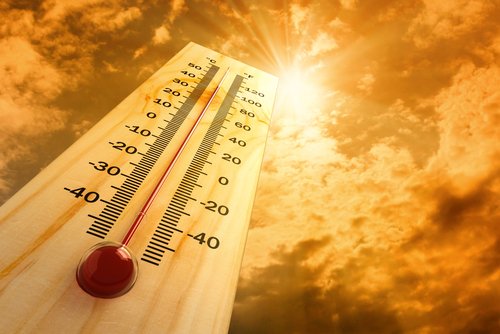2 Solutions for Electrical Enclosures in Outdoor Environments
 When an electrical enclosure is located outdoors or in an environment that is not climate controlled, the components inside must be protected from over-heating. Electrical components generate heat when they operate, and the external temperature around the electrical enclosure can also add additional warmth and humidity to the equation. These two factors contribute to the heat load of the enclosure, which helps determine the type and size of cooling system to use.
When an electrical enclosure is located outdoors or in an environment that is not climate controlled, the components inside must be protected from over-heating. Electrical components generate heat when they operate, and the external temperature around the electrical enclosure can also add additional warmth and humidity to the equation. These two factors contribute to the heat load of the enclosure, which helps determine the type and size of cooling system to use.
2 Cooling Systems for Electrical Enclosures
In an environment without climate control, a filtered fan is typically not likely to provide sufficient cooling, especially when external temperatures start to rise. In this case, adequate cooling can be achieved with either an air conditioner or an air to air heat exchanger.
- Air to air heat exchangers – When the ambient temperature remains below the desired temperature inside the electrical enclosure, an air to air heat exchanger is the most efficient and cost effective way to cool the components inside. This type of cooling system uses a heat pipe to transfer heat from the air inside to the air outside. It does this with no moving parts except for two fans, which is why it is so efficient. This type of system also requires relatively little maintenance. However, when the ambient temperature rises above that inside the enclosure, an air to air heat exchanger is no longer effective because it relies on the temperature difference to draw heat away from the electrical components.
- Air conditioners – For applications where the external temperature is higher than the temperature inside the enclosure, the only way to provide effective cooling is with an air conditioner. Much like a residential air conditioning unit, this system uses a compressor to move refrigerant through the system and reduce the temperature inside the electrical enclosure. However, unlike a residential unit that requires a condensate drain, enclosure air conditioners can be designed with condensate management systems that evaporate the condensation and eliminate the need for drains.
Both of these cooling solutions operate with a closed air loop that prevents airborne contaminants in the surrounding environment from entering the enclosure. If the enclosure is likely to be exposed to high humidity levels, an air conditioner is generally the best choice because it also dehumidifies the air inside the enclosure.
Thermal Edge is here to help you with all of your enclosure cooling needs. We’ll help you evaluate the heat load of the enclosure and the conditions in the surrounding environment so you can choose the most cost effective cooling system for the job. Contact us today to get your free quote.
What type of cooling systems do you currently use for your electrical enclosures?

